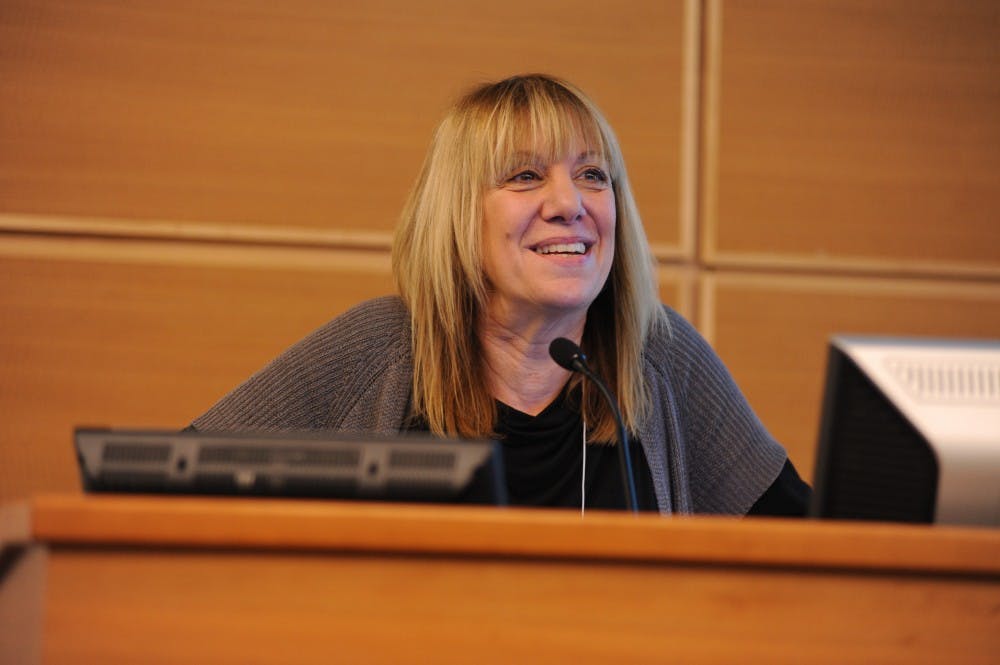
Annenberg professor Barbie Zelizer was recently featured in a CNN article that discussed the controversy surrounding the on-air shootings of Alison Parker and Adam Ward. | Courtesy of Kyle Cassidy
Annenberg professor Barbie Zelizer was recently featured in a CNN article to weigh in on the somber debate of whether news outlets should publish the disturbing footage of the on-air shootings of Alison Parker and Adam Ward. Though a difficult issue, she is something of an expert on the topic.
Zelizer’s research has “always focused on the intersection of journalism, culture and collective memory, with a focus on images in different times — of war, terrorism, natural disasters,” she said.
And Zelizer says yes — that the gruesome video should be made public.
“I think you can ask yourself one question,” she said. “If the news was bad, would you take it out of the news story? No. So why would you take out pictures?”
Zelizer said that there are “repetitive debates about what pictures should be doing in the news,” and indeed, the video of the Roanoke shooting isn’t the only graphic image that media outlets have grappled whether to show over the past week.
When drowned Syrian toddler Aylan Kurdi washed ashore in a Turkish resort town, the same debate arose of whether to publish the graphic images. In this instance, Zelizer sees even more urgency in showing the photo.
“It’s an important picture to show,” she said. “I’m surprised so many news outlets chose not to show it.”
Sometimes visuals — and heart wrenching ones in particular — are the only way to force people to care, or to do something about a problem, Zelizer said.
“The idea of engaging people, capturing their attention is a very important goal,” she said. “Engagement propels people to seek out additional information.”
The photo of Aylan Kurdi has caused a public outcry for European politicians to address the Syrian refugee crisis. Without the photo’s emotional impact, as conveyed in the media, this mobilization may not have occurred.
“Pictures grab us emotionally, stay with us, bypass intellect and move us. That’s an important thing,” Zelizer said. “They remind us why we should care about the news. And a lot of people don’t care about the news anymore.”
In fact, images that have sparked great debate often do not stay relevant for long.
“These pictures pop up, there’s a debate, lots of real quick action,” she said, adding that the question lies in how long people will stay involved. For this reason, Zelizer believes there should be many pictures, to keep people involved.
Zelizer has often been asked to weigh in when visuals create a moral dilemma for news outlets. She’s been interviewed for PBS Newshour and The Huffington Post, among other publications.
Even though professors are usually thought of as somewhat isolated in academia, it’s very natural for Zelizer to move back and forth between her research and weighing in on current events and the news — before becoming a professor, she was a journalist for Reuters.
“To go back into the media to talk about that is a very natural journey,” she said.
It was when she was reporting in Jerusalem that she became interested in the fundamental question of accountability, which eventually prompted her to pursue the same topic in the academic world.
“Who’s going to believe us? Why should they believe us?” she asked. “The public has no way of checking what a reporter claims to be true and factual. There’s this faith based activity that goes on. When I left journalism ... it was to find an answer to that.”
The Daily Pennsylvanian is an independent, student-run newspaper. Please consider making a donation to support the coverage that shapes the University. Your generosity ensures a future of strong journalism at Penn.
DonatePlease note All comments are eligible for publication in The Daily Pennsylvanian.





